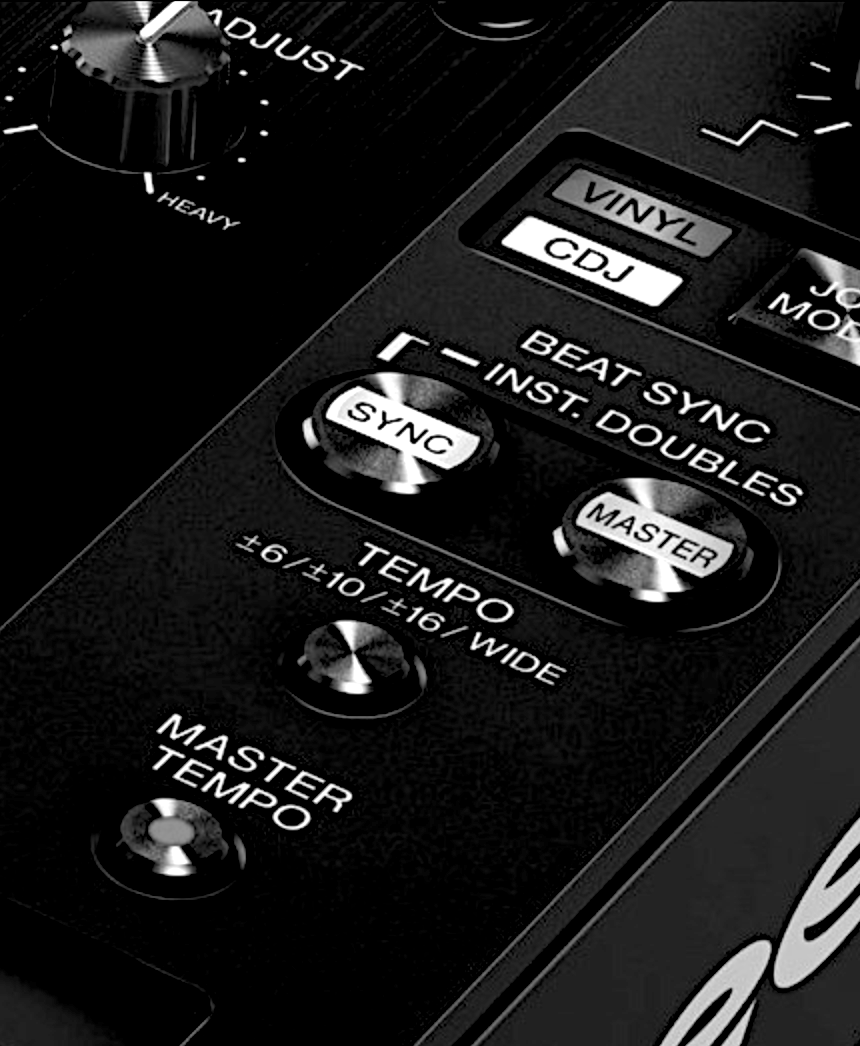Let your expensive DJ computer do the dirty work.
Stop Worrying About It
Many prominent DJs utilize the sync function in their sets, including Carl Cox, Laidback Luke, Tiesto, Richie Hawtin, May P, Dubfire, Ean Golden, and Kink.
Focus on Creativity
Using sync allows DJs to focus less on beat matching and more on exploring effects, creative mixing, and engaging with the crowd.
Seamless Transitions
Sync ensures that two tracks are perfectly aligned in time, making transitions smoother and less prone to beat mismatches.
Improved Sound Quality
Sync helps create cleaner, more polished mixes by maintaining rhythmic consistency and preventing beat drift or awkward transitions.

To use Sync successfully, you will have to put in the work.
Your beat grids will need to be on time and checked for every track.
Grid It
•
Sync It
•
Mix It
•
Grid It • Sync It • Mix It •

“I don’t buy it. Manual beat matching is an essential part of DJing.”
Is it?
Manual beat matching was required on turntables. It’s not on CDJs.
It doesn’t provide you with creative choices. It’s a job you have to perform and monitor.
You should learn how to do it, but only use it when you have to.

“What if sync breaks? What are you gonna do! You’re screwed.”
Is it actually broken?
Most sync issues are your fault.
Offbeat grids or diligence in checking all your tracks are the most common problems.
In the rare instance sync is actually broken, go ahead and beat match manually.
You should learn how to do it, but only use it if you have to.

“F** Off!”
Why you so mad?
There is no honor or clout from beat matching manually on CDJs.
It doesn't make you a superstar or mix better. Neither does Sync.
Try Sync out, you’ll probably like it.
If you don’t then no harm no foul.

“My beat matching sounds better and more human.”
Does it really sound better?
“Back in my vinyl days of the ’90s and early 2000s, we all chased that perfect beat match.
A solid lock let you breathe and flow into the mix, but nailing a true 100 % sync was rare after 48-64 beats, even the tightest blend would start to drift.Once the phase slipped, the music suffered.
Quick, confident hands could rescue it with minimal fuss, yet every correction felt like playing with fire, and even the best DJs risked the occasional major stumble.Did the crowd care how “manual” the mix was?
Not a bit.
They just wanted a seamless ride, not fixes or beats stubbornly rubbing out of phase.
What matters most on the floor is fluidity, pure and simple. “

“Using sync robs your mixes of soul. If I don’t hear any mistakes its not human.”
So many mixes from the past are pristine, without mistakes or audible fixes.
How did they do it?
They rehearsed and planned out every pitch fader position.
They used multitrack tape to go back and re-record certain transitions.
This has been going on since the 70s.What about live mixes?
I can point to hundreds of live mixes that have no audible mistakes from vinyl and CDJs, from every era.
Mixing mistakes are not proof of a soul.
Your track selection, programming and blends are.

“I used to be good at remembering phone numbers.
I don't have to anymore because I have an address book in my phone.
Can I still remember a phone number?
Yeah sure. Do I want to? No, not really.”
”I don’t understand all the stigma, stubbornness and bravado against the use of Sync.Beat matching is not special.
It's a boring job. Let the $3000 DJ super computer do it.”


